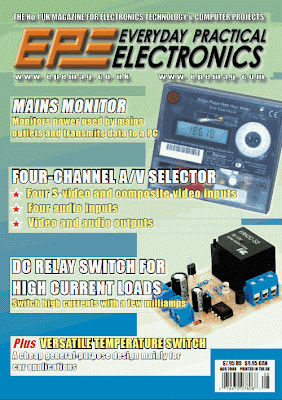Solar Bug
This is a fun circuit, hide this solar-powered circuit suitably and see the reaction of your friends to the chirpy sound produced by it every few minutes. In all probability, it will coax them to find out where the sound is coming from. The circuit runs off a miniature solar power panel, which can be taken out from an old calculator such as Citizen CT-500. A panel giving 1.5V to 2.5V is required. Note that the circuit can work properly from a panel as small as 3 cm(square).
Working
If a digital voltmeter is connected across capacitor C2, a slow build-up of voltage can be observed when the panel is exposed to light. Transistors T1 and T2 form a relaxation oscillator.When C1 charges to 0.6V, transistor T1 conducts and the charge built up in C2 is discharged through the
piezobuzzer to produce a short beep. While testing the circuit, the value of resistor R1 can be reduced to, say, 1 kilo-ohm. Use a good-quality buzzer to ensure that the sound produced is
loud enough.
Circuit Diagram

Note : Click for better Quality
This is a fun circuit, hide this solar-powered circuit suitably and see the reaction of your friends to the chirpy sound produced by it every few minutes. In all probability, it will coax them to find out where the sound is coming from. The circuit runs off a miniature solar power panel, which can be taken out from an old calculator such as Citizen CT-500. A panel giving 1.5V to 2.5V is required. Note that the circuit can work properly from a panel as small as 3 cm(square).
Working
If a digital voltmeter is connected across capacitor C2, a slow build-up of voltage can be observed when the panel is exposed to light. Transistors T1 and T2 form a relaxation oscillator.When C1 charges to 0.6V, transistor T1 conducts and the charge built up in C2 is discharged through the
piezobuzzer to produce a short beep. While testing the circuit, the value of resistor R1 can be reduced to, say, 1 kilo-ohm. Use a good-quality buzzer to ensure that the sound produced is
loud enough.
Circuit Diagram

Note : Click for better Quality
































